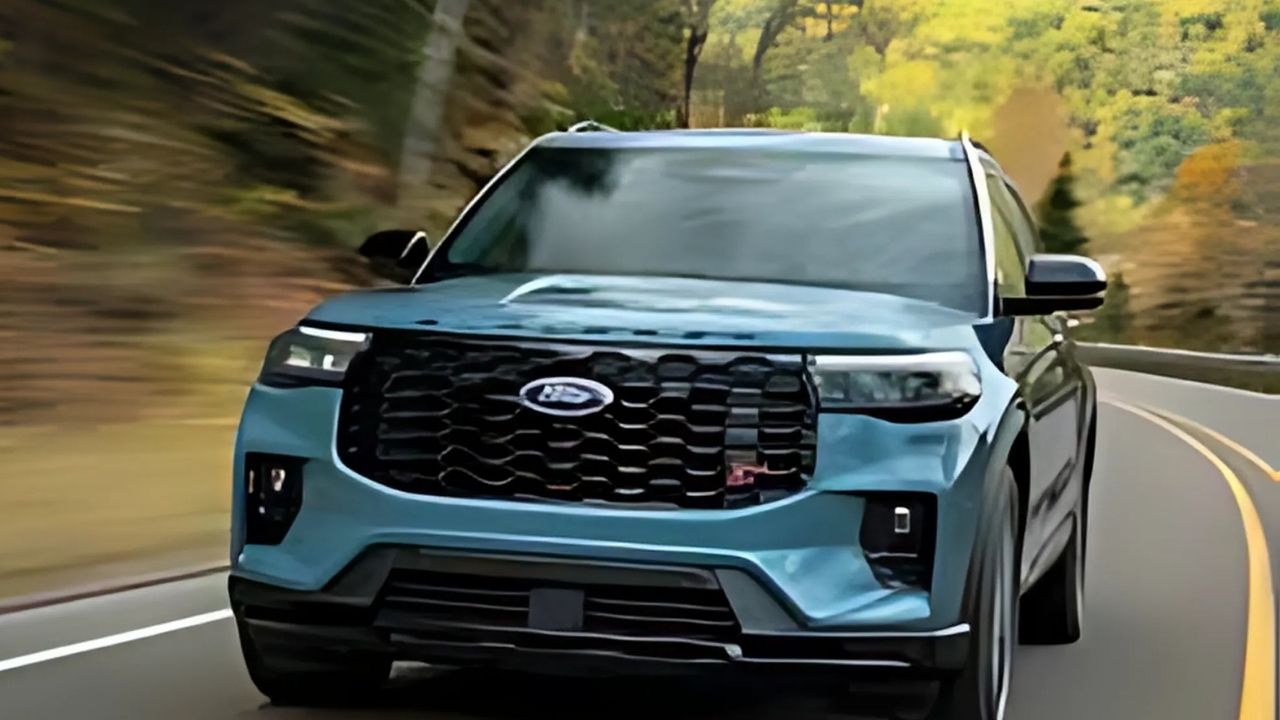The Ford Explorer has long been a name tied to American family SUV culture, known for its spaciousness, reliability, and versatility. For 2025, Ford has redefined its flagship SUV with a sharper design, smarter technology, and improved efficiency, while staying true to its adventurous roots.
Bold Exterior Evolution
The 2025 Ford Explorer makes an instant impression with a bold exterior that reflects Ford’s modern design philosophy. The SUV receives a reworked grille, slim LED headlamps, and a more aerodynamic silhouette, giving it a commanding yet contemporary look. The body has stronger character lines and athletic proportions, ensuring the Explorer maintains its road presence both in urban settings and on rugged trails.
Large alloy wheels, restyled bumpers, and sleek taillights complete the redesign, adding a layer of sophistication that balances toughness with modern elegance.
Luxurious and Tech-Filled Cabin
Inside, the Explorer has truly stepped up its game. The 2025 model introduces a 14.6-inch central infotainment screen paired with a digital instrument cluster that creates an immersive driving experience. The cabin feels premium, with soft-touch materials, leather finishes on higher trims, and customizable ambient lighting.
Ford has improved seating ergonomics and given extra attention to noise cancellation, ensuring a quieter and more comfortable ride. With flexible seating for up to seven passengers, plus generous cargo space, the Explorer continues to live up to its reputation as a family-friendly SUV.
Engine Options and Performance
The new Explorer offers multiple powertrain choices, catering to different customer needs. The base trims come with a 2.3-liter EcoBoost turbocharged engine, delivering a balance of performance and fuel efficiency. For those wanting more power, Ford continues with the 3.0-liter twin-turbo V6, which brings exciting acceleration and towing capability.
Hybrid options have also been strengthened for 2025, appealing to drivers conscious of both performance and fuel economy. Smooth handling, improved suspension tuning, and available all-wheel drive ensure the Explorer is equally at home on highways or challenging terrains.
Safety and Assistance Systems
Ford packs in its comprehensive Co-Pilot360 driver-assistance suite, making the SUV one of the safest in its class. Features include adaptive cruise control, lane-centering technology, evasive steering assist, and intersection assist. Higher trims also benefit from hands-free driving support on compatible highways, signaling Ford’s push into semi-autonomous tech for everyday drivers.
Connectivity and New-Age Features
For 2025, Ford has emphasized connected car technology. The Explorer now features over-the-air software updates, improved voice recognition, and wireless smartphone integration. Rear-seat passengers aren’t left behind either, with available entertainment packages and multiple charging ports to keep devices powered on long journeys.
A Step Toward Electrification
While the Explorer still heavily relies on petrol and hybrid engines, Ford has confirmed that a fully electric Explorer is in the works as part of its global EV strategy. Expected to debut later in the decade, the electric version will likely share technology with Ford’s EVs for Europe but remain tailored to SUV buyers who want a blend of sustainability and space.
Positioned for Global Appeal
In the competitive three-row SUV market, the 2025 Ford Explorer goes head-to-head with rivals like the Toyota Highlander, Kia Telluride, and Chevrolet Traverse. With its fresh styling, advanced tech, and a clear path toward electrification, the Explorer secures its spot as a versatile SUV that appeals to families, adventurers, and tech-driven buyers alike.
